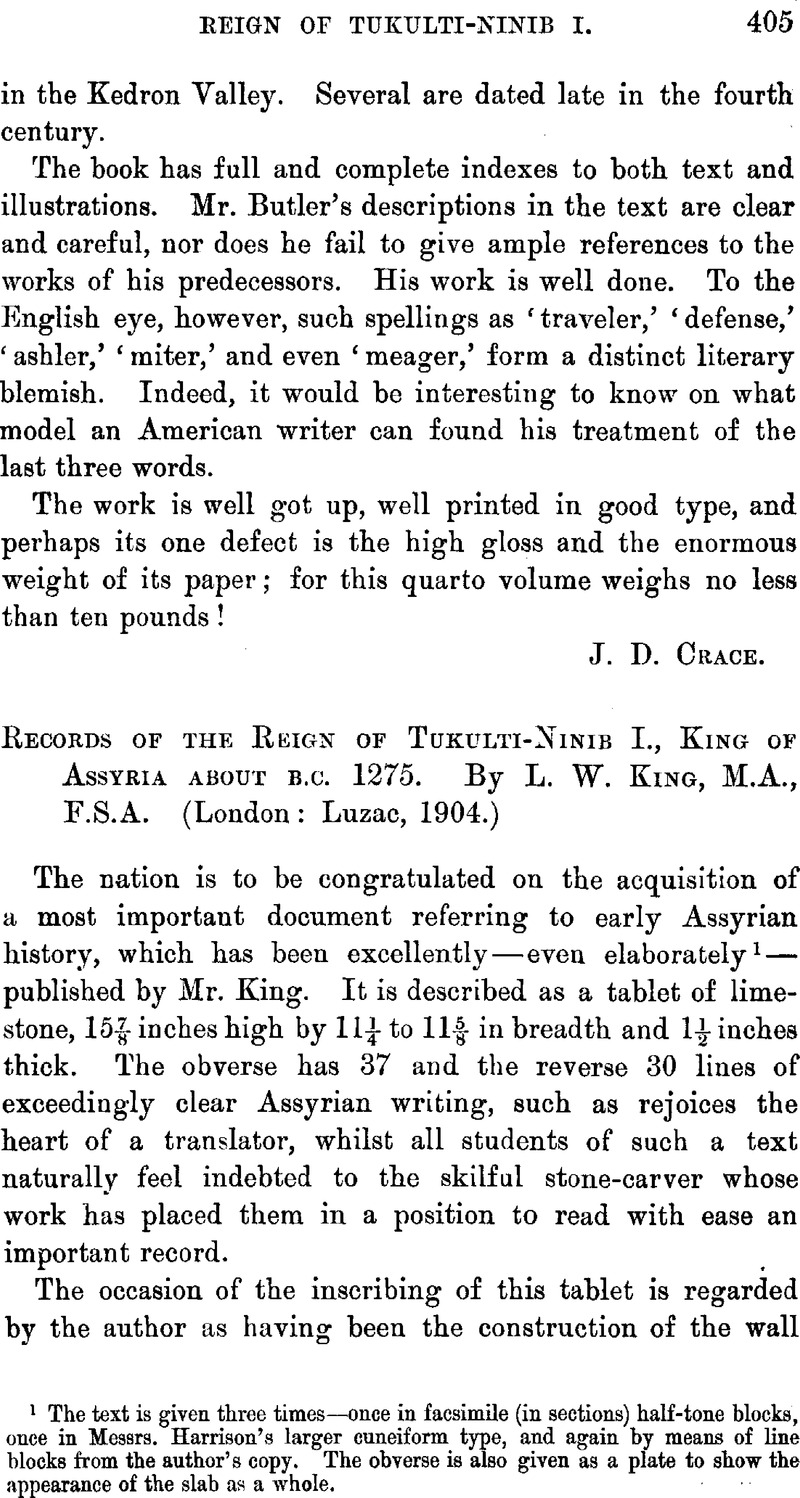No CrossRef data available.
Article contents
Records of the Reign of Tukulti-Ninib I., King of Assyria about b.c. 1275. By L. W. King, M.A., F.S.A. (London : Luzac, 1904.)
Published online by Cambridge University Press: 15 March 2011
Abstract

- Type
- Notices of Books
- Information
- Copyright
- Copyright © The Royal Asiatic Society 1905
References
page 405 note 1 The text is given three times—once in facsimile (in sections) half-tone blocks, once in Messrs. Harrison's larger cuneiform type, and again by means of line blocks from the author's copy. The obverse is also given as a plate to show the appearance of the slab as a whole.
page 406 note 1 In this notice the old reading Tukulti-Ninib is retained, that being the form used by Mr. King. In reality, however, the name seems to have been Tukulti-Enu-rêštū, or something similar (see the Journal of the R.A.S. for January, p. 206). He was son of Shalmaneser I, grandson of Adad-nirari, and great-grandson of Arik-dên-îli, as Delitzsch has shown that Pudi-ilu is to be read.
page 406 note 2 Enu-rêštū (?).
page 407 note 1 Thus (without the punctuation) in the original. The author points out that the land of Meḫru was so called from the meḫru-trees which grew there. Are we to understand from this passage that Qutû, Uqumanû, Elḫunia, and Šarnida were also habitats of the same tree, or is it only the last-named ? It is difficult to imagine that the copula ‘and’ has been placed before Šarnida instead of Meḫru, though this is possible. Mr. King translates: “ the Ḳutî and the Uḳumanî and the lands of Elkhunia and Sharnida and Mekhri.”
page 408 note 1 This is all the more necessary in that the obtaining of a sight of an exhibited tablet at the British Museum (to say nothing of a careful examination such as this passage would need) is quite an affair of state.
page 408 note 2 Another improved rendering has been obtained by Mr. King by detaching the name “ Bel” from Tukulti-Aššur (J.R.A.S. for October, 1894, pp. 814, 822, 1. 12, and 826). The passage then reads “ For 6 years, until (the time of) Tukulti-Aššur, Bel was residing in Assyria—he went (back) to Babylon in the time of Tukulti-Aššur.” He suggests that Tukulti-Aššur was the successor of Tukulti-Ninib, in which case Aššur-naṣir-apli, the son who revolted against him, did not succeed him.
page 408 note 3 His reading of the name of king Šagarakti-Šuriaš on Sennacherib's tablet referring to the recovery of his seal is especially noteworthy. (I came across the form Ša-ga-ra-ak-ti-šur-ya-aš some time ago.)




